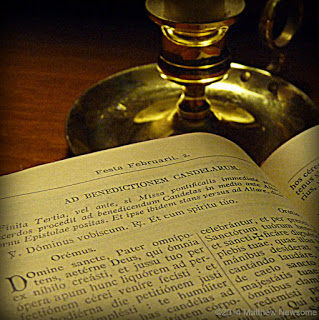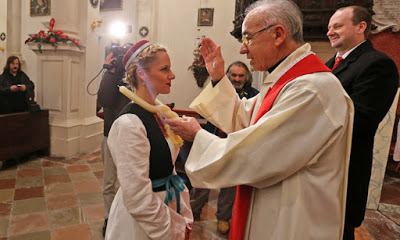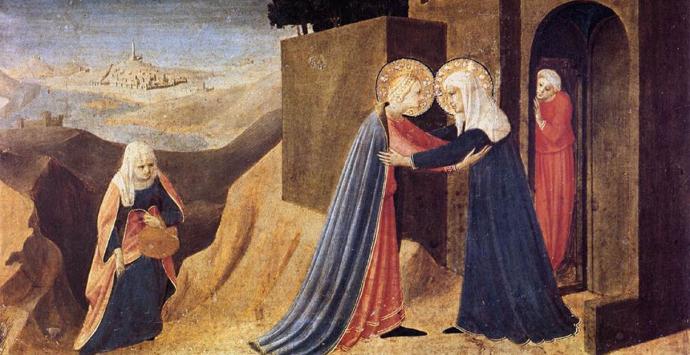Throats & Candles

There are many good things about being Catholic (that whole forgiveness of sins, salvation and eternal beatitude thing is pretty awesome). But among the great things about our faith are all the interesting traditions. In early February, we have some particularly interesting traditions regarding candles and throats.
CANDLEMAS
February 2 is the Feast of the Presentation of the Lord, also known as “Candlemas.” It is traditional to bless candles on this day. This day marks the presentation of Jesus in the Temple forty days after His birth, and in some places is considered the official end of the Christmas season. According to Jewish Law, a woman could not approach the Temple for forty days after giving birth to a male child, after which time she must offer sacrifice in Jerusalem (Lev 12:1-8). Mary fulfills this law, offering “the sacrifice of the poor,” two turtledoves or pigeons.
While at the Temple, the Holy Family encounter Simeon, who had been promised by the Holy Spirit that he wouldn’t die before he had seen the Christ. When Simeon sees the baby Jesus, he cries out, “Lord, now let your servant depart in peace, according to your word; for my eyes have seen your salvation which you have prepared in the presence of all peoples, a light for revelation to the Gentiles and for glory to your people Israel” (Lk 2:29-32).
Pope St. John Paul II called Simeon’s words to Mary “a second Annunciation” (Redemptoris Mater, n 16). The reference to Christ as the light to the Gentiles is perhaps why this day has become associated with candles — the primary way of bringing light to darkness in the pre-modern world. The liturgy for this day includes rites for a procession and blessing of candles. For this reason, the feast became known popularly as “Candlemas” – the Mass of Candles.
ST. BLAISE & THE BLESSING OF THROATS
The day after Candlemas, February 3, is the feast of St. Blaise, bishop & martyr. St. Blaise was bishop of Sebaste in Armenia and was martyred during the reign of the emperor Licinius (r. 308-325 AD). He was also a physician and known as a healer of both men and animals. He is associated especially with ailments of the throat.
The association of St. Blaise with throat problems comes from an account of his healing of a young boy. When St. Blaise was imprisoned for his faith, he is said to have healed many of his fellow prisoners. One in particular was a young boy who was choking on a fish bone. St. Blaise prayed over the boy’s throat and he was able to cough up the bone. Because of this, it is traditional to bless throats on his feast day.
Coming as it does immediately after Candlemas, the tradition further developed to bless throats using two crossed candles which had been blessed the day before. In the Catholic Church, we don’t just bless things — we bless things with blessed things!


